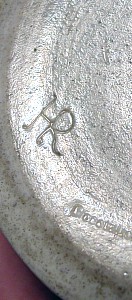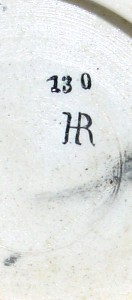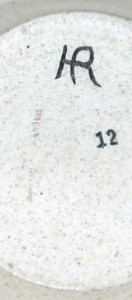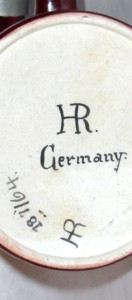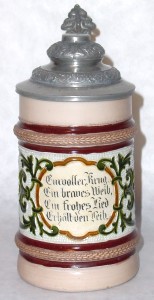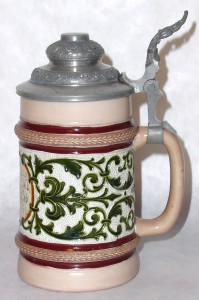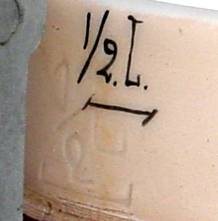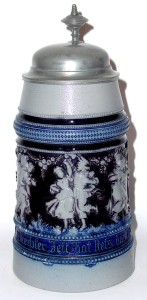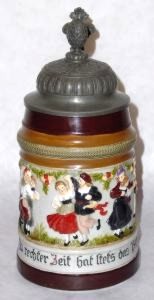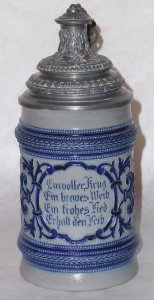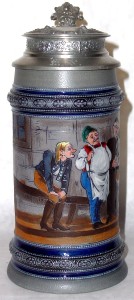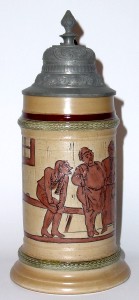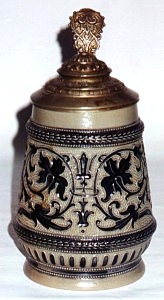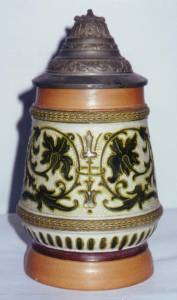HR porcelain steins come marked four ways. From left to right: An incised "type 1a" logo, an inked "type 1b" logo, a "type 1c/2" logo, and a "type 1c/2" logo with a "type 5" mark. The "type 1c/2" logo is lightly tooled (inscribed) with a stylus type instrument and then inked over. The "type 1b" logo and the "type 5" mark are simply inked onto an undisturbed surface. HR porcelain is heavier and less translucent than other porcelains and the steins are never found with lithophanes. ~~~~~~~
Pictured above is one of three known porcelain steins with a large, "type 4b," incised capacity mark. There is another number 147 and an HR 184/55 with a handpainted scene on the front. The stein above has the incised mark overwritten with a "type 6," handpainted capacity mark that was soon to replace it. In addition to the capacity mark, this stein has all the incised marks; the model number, "gesetzlich geschutzt," and a "type 1a" logo. These three large, "type 4b" capacity marks tie porcelain production to Freising, and to me, confirms that porcelain steins were indeed manufactured there. ~~~~~~~ The first porcelain steins produced in Freising would probably have been the very same model numbers that had previously been produced in stoneware, and like models 131 and 147 below would have been marked with the "type 1a" logo.
~~~~~~~ From 1887 on, possibly from late 1886, porcelain steins would have been marked with the "type 1c/2" logo and when required, the "type 5" decorating mark, as are the porcelain models 175 and 241 below. I suspect that these model numbers will also be found with the "type 1a" mark, but they simply haven't been reported yet.
~~~~~~~ In addition to the other problems HR may have been experiencing with their early porcelain production, it would have been discovered that stamping the model number, the "type 1a," HR logo, and the capacity mark into the porcelain caused many of the pieces to break when they were fired. When porcelain is fired it shrinks as much as 20-30%, but because the clay throughout is the same density when it comes out of the mold, this is usually not a problem. However, if you stamp anything into the clay, the clay compressed by the stamp is a different density than that surrounding it and when fired will shrink at a different rate often causing the piece to pull apart at that point. For that reason the stamped model number, the "type 1a," incised logo, and the incised capacity mark had to be replaced by marks that were less intrusive. |
